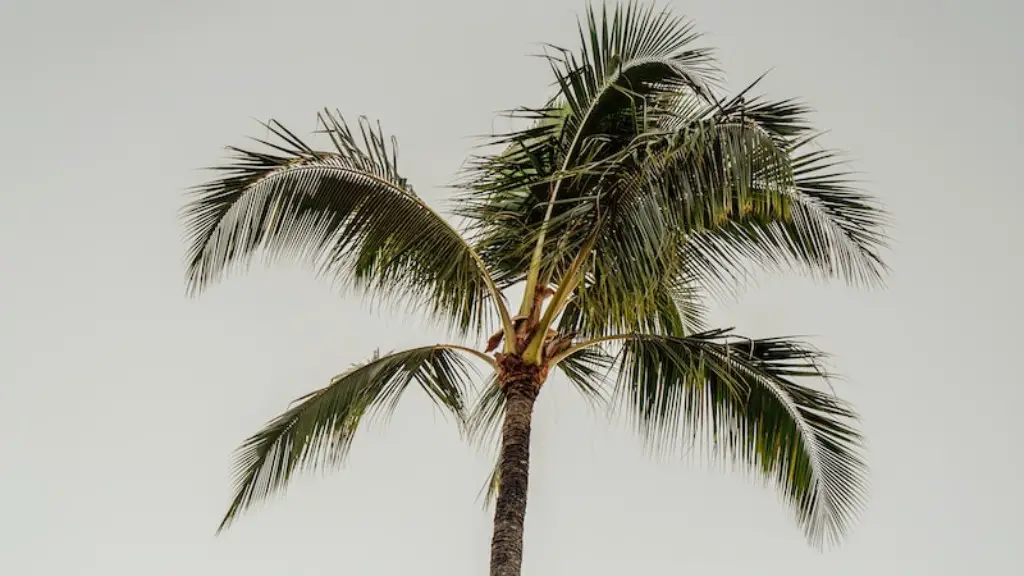Materials and preparation
Before attempting to string lights on palm tree fronds, it is important to make sure that you have all of the necessary tools and materials on hand. This task requires light-weight, durable twine or string, as well as a ladder if the tree is particularly tall. The string must be light enough that it does not weigh down the fronds or damage them. Plan to string the lights around the circumference of the tree, leaving fronds and guests unobstructed. Experts also advise taking extra plastic clips and a few spare bulbs.
Determine beforehand how many fronds will be strung with lights and where the outlets for plugging in the lights should be positioned in relation to the tree. Knowing this ahead of time will make the task easier as you go.
Process
Begin by gathering your materials and climbing the ladder if necessary. Start with the bottom fronds. Position the string where you have planned to and begin wrapping it around each successive frond. When fastening the lights to the string, use the plastic clips to secure them, as they provide a good grip and will not damage the fronds like metal clips, staples or tape. Make sure to wrap the string evenly around the tree, so there are no places without lights.
For extra stability, you can use small nails as anchor points for your string. Hammer the nails in between the fronds, being careful not to harm the tree. If any of the fronds are particularly thin, use two strings of lights instead of one to avoid piercing the frond. When finished, plug in the main cord.
Safety Considerations
This task can be quite dangerous if not done properly, so it important to keep safety in mind. It is essential to wear gloves and make sure that the nails and hammer used are suitable for the fronds and tree. Using a ladder near or around a tree can be hazardous, so be aware of your surroundings when setting it up and have an assistant to hold it. When unplugging and plugging in the lights, be careful of frayed electrical cords or corroded plugs.
Removing the lights
When it comes time to take them down, the process involves multiple layers of safety to ensure there is no damage done to the tree. To begin with, switch off the power while you unplug and disconnect the lights. Remember to wear the appropriate protective gear, as it is easier to be safe than sorry. To remove the nails, use a claw hammer or pliers and begin from the top. It’s much easier to work from top to bottom so you don’t have to climb the ladder multiple times.
With the nails and string removed, you can start to take the lights off of the tree. Use a plastic scaffold to start at the top and unwrap the string. Slide the lights off of the string and be sure to add them to a bucket so you know exactly where all the pieces will be once the task is complete. Do the same for the lower fronds.
Conclusion
Strung lights on palm tree fronds can bring a festive feel to any outdoor event. With the right materials and safety considerations, this task can be accomplished without damage to the tree or yourself. Upkeep is also important, and it is smart to use plastic clips that grip well and are not harsh on the fronds.
Using Artificial Lights
When using artificial light, it is important that they are insulated properly and have good grounding. This is especially true for metal halide systems, as metal halide lamps are considered high-voltage. It’s also essential to use a licensed electrician to avoid potentially hazardous situations.
Experts advise against wrapping the tree with metal strips (as an extra insulation) as this is more likely to damage the tree. Instead, use the plastic clips to attach the lights and then use a ground adaptor plug.
Using Natural and Solar-Powered Lights
Using natural and solar-powered lights on palm tree fronds is a popular option for those looking to save some money. Natural lights contain no electricity, eliminating the need for wires, grounding and additional safety precautions. Solar-powered lights can be a bit more costly, but they require minimal preparation and offer a good balance of vivid lighting and ambiance.
These types of lights come in variations, like holiday- or theme-based shapes, that offer an alternate to traditional lights and bulbs. The most important consideration is to make sure that they are secured securely against strong winds and heavy rain.
General Considerations
When stringing lights on palm tree fronds, it is important to make sure you are careful about the type of lights you use. LED bulbs are suggested for many commercial, industrial and outdoor purposes, as they emit no heat and are resistant to weather elements, though more expensive up front. They come in a variety of sizes, colors and intensities, making them a suitable choice for many different applications.
Using multiple colors can give a really stunning effect, but be wise to designate colors to specific fronds and strings. Also be mindful of price, as some bulbs can be up to 8 times more expensive than others. Doing research, scoping out which colors and variations best meet the occasion, and keeping weather conditions in mind, can help prevent unpleasant surprises during the end of lighting production.


